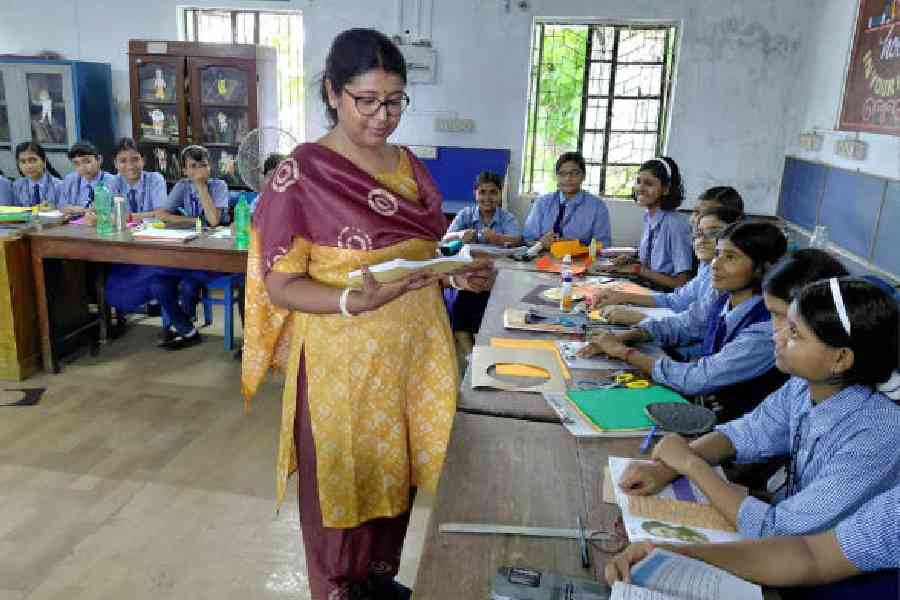A century-old girls’ school in Malda has taken a bold step to reimagine classroom learning by introducing the ‘No More Backbencher’ model, a student-centric teaching method inspired by a 2024 Malayalam children’s film.
Barlow Girls’ High School in Englishbazar became the first school in the district to adopt the model on Saturday, with Class VII students participating in three trial sessions across mathematics, history and work education.
The model involves replacing the traditional row-based seating with a semi-circular classroom arrangement, allowing every student to sit closer to the teacher and face them directly. This, educators say, helps eliminate the long-standing divide between “frontbenchers” and “backbenchers”, fostering equal participation.
“In conventional classrooms, students at the back often struggle to see the blackboard or engage with the lesson. In this new setup, all 55 students interacted with their teachers, a clear sign that it boosts involvement,” said Deepasri Majumdar, headmistress of the school, who volunteered to pioneer the model in Malda.
The move follows a suggestion from state education secretary Subhra Chakraborty and deputy director (administration) Chinmay Sarkar, and was formally encouraged by Banibrata Das, district inspector of schools (secondary education), who was present to observe the rollout.
Das said a heartwarming Malayalam film, Sthanarthi Sreekuttan, directed by Vinesh Viswanath, which questioned the divide between frontbenchers and backbenchers, inspired them to try out the “experiment”.
Many schools in Kerala also started a circular seating pattern in classrooms after the film released, she said.
“The message is clear — an ideal classroom should have no such distinction between the so-called front-benchers and back-benchers,” said Das. “All children are equal”.
Students also appeared to be thrilled by the change.
“With teachers so close, we felt more confident. We asked questions and even answered without hesitation,” said Krittika Mandal, a Class VII student.
Her classmate Arushi Mali echoed the sentiment, calling the new classroom seating pattern “fun and interactive”.
Educators believe the approach could help revive interest in Bengali-medium schools, where enrolment has seen a steady decline.
“Direct eye contact, close proximity, and two-way engagement will create a vibrant classroom environment. This could be a game-changer for Bengali-medium schools,” said Shaktipada Patra, Banga Ratna awardee and noted academic.
The education department is now likely to encourage other schools in the district to replicate the model in the coming months.











